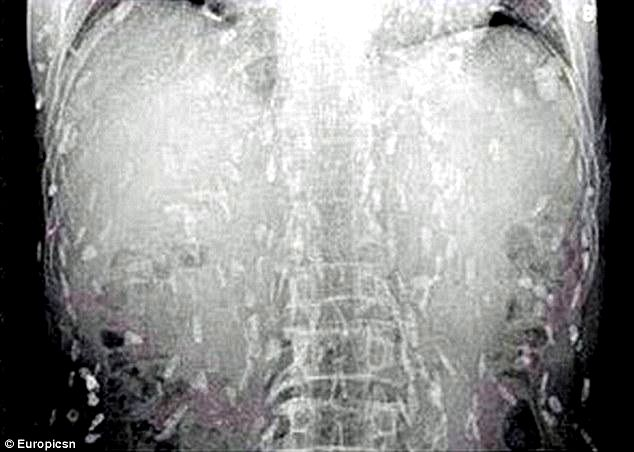Sushi and Sashimi - Are They Safe to Consume?
How can you be sure the bacteria and parasites are dead?
In the United States, 62% of the population has tried sushi at least once. (1) However, recent studies from Norway and Brazil indicate that consumers should be checking that their sushi and sashimi were recently prepared and stored properly. To define our terms, many non-Japanese use the terms sashimi and sushi interchangeably, but the two dishes are distinct and separate. Sushi refers to any dish made with vinegared rice. While raw fish is one traditional sushi ingredient, many sushi dishes contain seafood that has been cooked, and others have no seafood at all. Sashimi by contrast, consists of raw fish or meat and is always served on its own.
Sushi and sashimi are a complex meal to prepare and distribute due to the nature of multiple lightly prepared vegetables and raw meats, which may harbor various pathogens. Furthermore, they often have strict storage temperature requirements and a short shelf life, which further adds to the complexity. Additionally, they are typically prepared by hand, which could lead to unintentional pathogen contamination risk due to improper hand hygiene by the chef. The use of raw or uncooked meats is especially risky, because their use may lead to an increased risk of foodborne illness due to common food pathogens such as Salmonella, Listeria,Aeromonas, Vibrio parahaemolyticus and parasites especially the fish tapeworm, Diphyllobothrium latum. (2, 5)

Even though freezing will kill parasites, it won't kill bacteria. Those who prepare fish should be aware that cooking at a temperature of only 55°C for 5 minutes will kill the larvae; if consuming raw fish, freezing to − 20°C for 7 days, or flash freezing to − 35°C for 15 hours, as long as the flesh is less than 15cm thick, effectively kills the larvae also. Sushi and sashimi chefs should use only fish frozen in this way. While these freezing protocols are the standards required by public health regulations, they are not easy for public health inspectors to verify.(6) The x-ray shown above is from a Chinese man who regularly consumed raw improperly prepared fish and complained of itching and abdominal pain. His body was infected with hundreds of fish tapeworms. (5)
In a study conducted in Norway by Hoel et al., various types of pre-made ready-to-eat (RTE) sushi were analyzed and a multitude of bacteria were discovered.(2) After microbial analysis, approximately half of the 58 sushi samples analyzed were considered unsatisfactory for consumers with >6 log CFU/g. The distributors prepared the meals for distribution and products were sold within 2-3 days. This study determined that poor temperature control during distribution from the preparation sites to the stores led to increased microorganism concentrations.
In Brazil, a study was conducted by Gomes et al. to determine the microbiological quality of sushi and sashimi in the Federal District.(3) In this study, 27 samples of sashimi and sushi were collected and analyzed for various microorganisms. Overall, 40.7% of the sashimi samples and 25.9% of the sushi samples were deemed unfit for consumption based on food safety guidelines in Brazil. The study concluded that the ingredients must be of very high quality in order to produce RTE foods with a low concentration of microorganisms. Since sushi and sashimi are prepared manually with raw ingredients and no heat processing, hygienic preparation is extremely important.
At the grocery store, sell by dates and prepared by dates can be observed on sushi and sashimi boxes. If sushi or sashimi is consumed immediately after preparation, then it is more likely to be safe. If it is not consumed immediately, it should be stored at refrigerated temperatures.(4) These studies support that with good preparation practices by the producers, more temperature controlled transportation implemented by distributors, and due diligence by consumers to ensure the sushi is freshly prepared, people are more likely to avoid contracting foodborne illness.
Meet the author

SENIOR TECHNICAL SERVICES AND R&D MANAGER at HARDY DIAGNOSTICS
Anna Klavins, RAC-Devices, B.S Cellular and Molecular Biology
Anna Klavins is the Senior Technical Services and R&D Manager at Hardy Diagnostics where she oversees the Research and Development, Design and Development, Quality Control, Technical Support, and Performance Studies teams. She earned a Molecular and Cellular Biology B.S. degree from Cal Poly San Luis Obispo while playing for the Division I NCAA women’s tennis team. Since joining Hardy Diagnostics in mid-2016, she has authored sixteen FDA 510(k) submissions for class II microbiology in vitro diagnostic devices. She has published in the Journal of Clinical Microbiology and the Journal of AOAC INTERNATIONAL, as well as presents in vitro diagnostic device performance evaluation results annually at global scientific conferences such as ASM Microbe, the AOAC Annual Meeting, and the International Association of Food Protection annual meeting. She is an advisor to the Joint CLSI-EUCAST Working Group and has earned the RAC-Devices certification.







